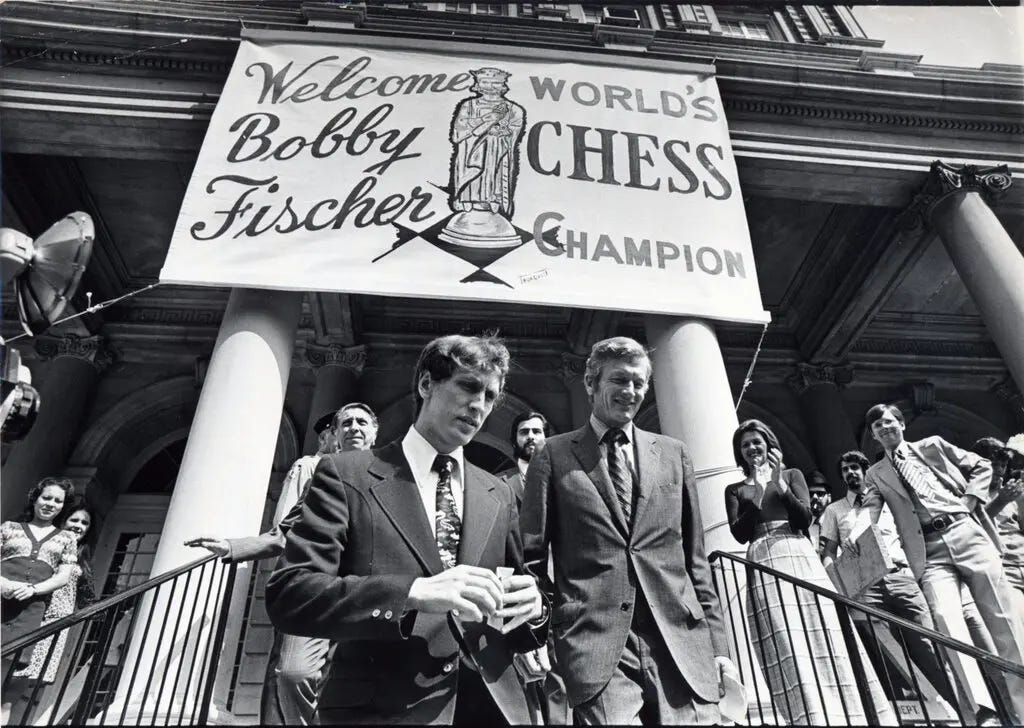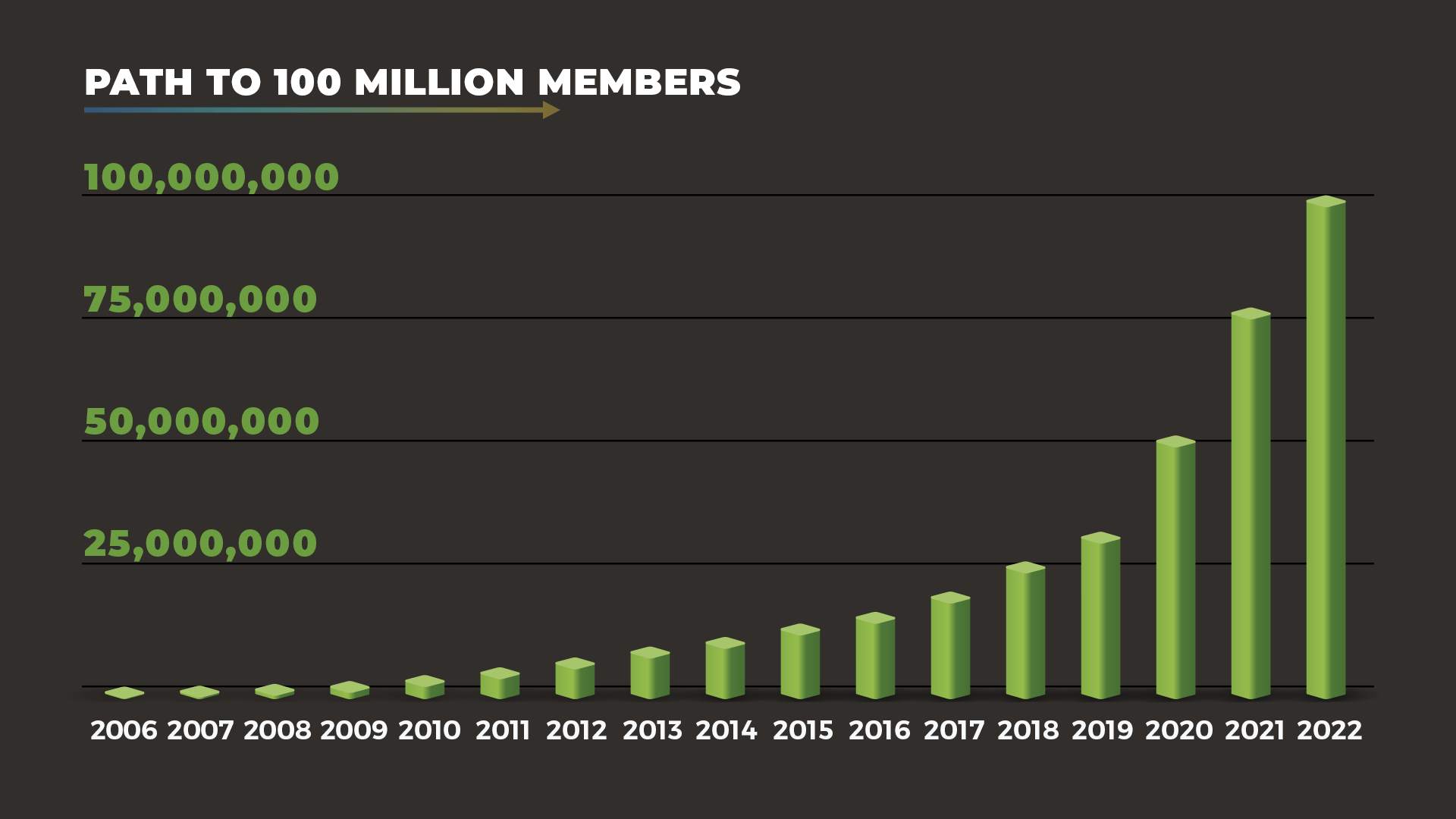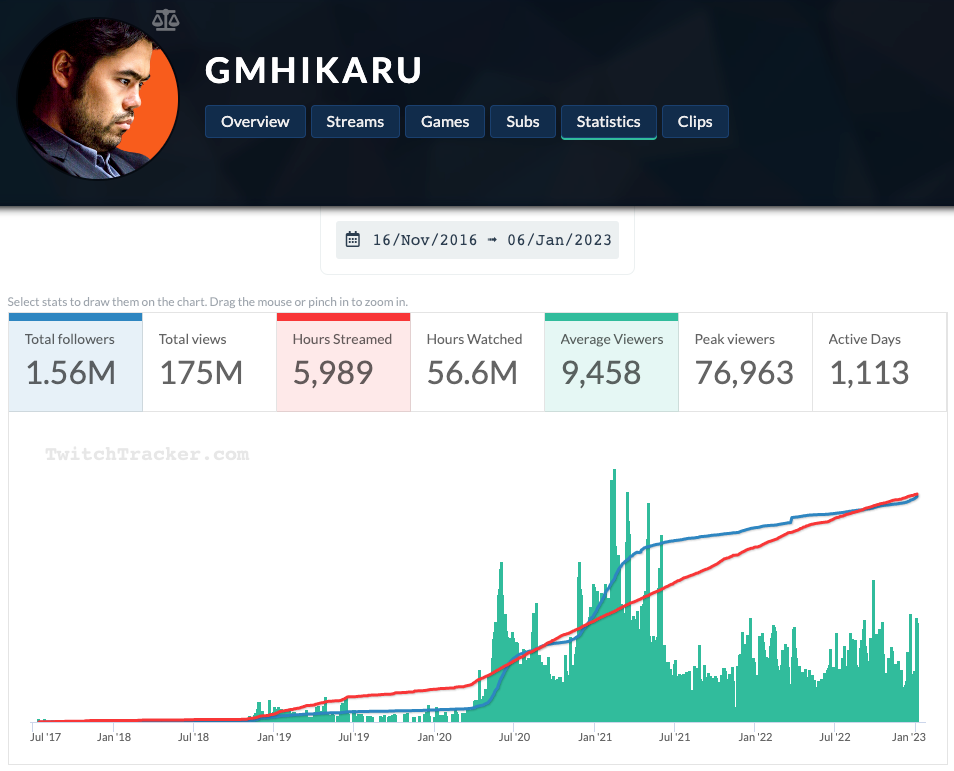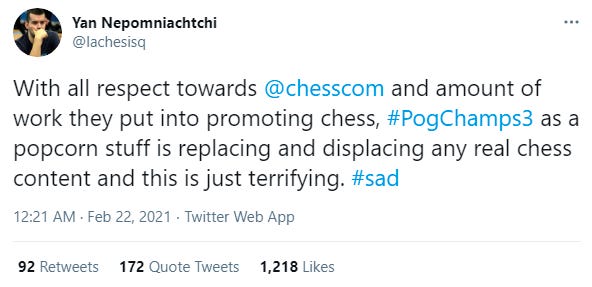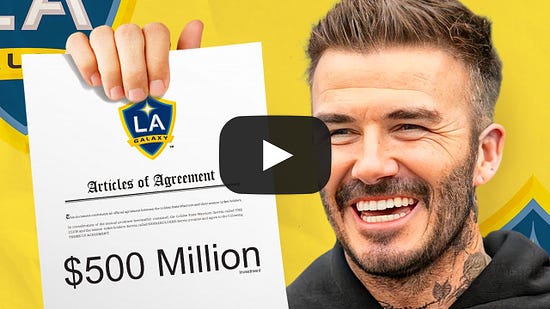How The Resurgence Of Chess Built A $500 Million Company
If you are not a subscriber of Huddle Up, join 77,000+ other professional athletes, business executives, and casual sports fans that receive it directly in their inbox — it’s free. Today At A Glance:Chess — a game estimated to be 1,500+ years old — is having a modern-day resurgence. This resurgence can be traced to 2018 and is anchored by four pillars: Chess.com, Twitch, the COVID-19 pandemic, and The Queen’s Gambit. Today’s newsletter will explore precisely what is happening, why you should care, and how one business is benefitting more than others. Enjoy! Today’s Newsletter Is Brought To You By Eight Sleep!I’ve been using an Eight Sleep mattress for several years now, and it’s one of the best products I’ve ever purchased. Their thermo-regulation technology — the bed gets colder or warmer throughout the night depending on individualized health metrics — helps me fall asleep faster, get higher-quality sleep, and wake up feeling energized. But don’t trust me: clinical data shows that Eight Sleep users experience up to 34% more deep sleep, and elite athletes like Lewis Hamilton, George Russell, Francis Ngannou, and Justin Medeiros are now using Eight Sleep to gain an edge on the competition. So check them out, and save $250 through my exclusive link below. Friends, Chess.com is one of the world’s most interesting companies. At its core, it’s a website that allows people to play chess online. But they also offer lessons and coaching, social media-like features, content, and news. The business was founded in 2005 by two friends: Erik Allebest & Jay Severson. They purchased the domain name Chess.com for $55,000 from a failed chess tutoring startup that had gone bankrupt, and they have never raised a single dollar of venture capital. But fast forward eighteen years, and the story is pretty incredible. Chess.com is now the world’s #1 online platform for chess. They have more than 100 million users, and 10 million games are played on the platform daily. They have grown to over 400 employees, all of which have worked remotely from day one, and it’s estimated that the company finished 2022 with about $100 million in annual revenue. But that’s only half the story — because while Chess.com might seem like an overnight success, many other factors are at work. So let’s dive in. A Brief History Of ChessThe history of chess is equally complex as it is fascinating. The game is rumored to have originated more than 1,500+ years ago, born out of the Indian game chaturanga before the 600s AD. The game then spread throughout Asia and Europe over the coming centuries and began to look like the chess we know today by the 16th century. Still, chess sets weren’t uniform at all, a single game could last up to 14 hours, and chess theory was so primitive that an early chess master named Ruy Lopez often felt his best advantage was by simply playing with the sun in his opponent’s eyes. But that all changed in the 19th century. A game and toy manufacturer named Jaques of London introduced a new style of chess pieces created by Nathaniel Cooke. These pieces were then endorsed by the strongest player at the time, Howard Staunton, and they quickly became popular in tournaments and chess clubs worldwide. Chess clocks were introduced a few years later, and the combination of standardized sets plus increased game speed propelled chess into the modern age. Players started to develop and deploy different techniques — aggressive, situational, defensive, positional, etc. — and Wilhelm Steinitz was crowned as the first official world chess champion in 1886. A few different champions were crowned over the next 30+ years, including Emanuel Lasker, Jose Raul Capablanca, and Alexander Alekhine. But from 1927 to 2006, the chess world was dominated by players from the Soviet Union and Russia — they held every world championship title (with only two exceptions) for nearly 100 years. Ironically, one of those two exceptions plays an essential role in the history of chess, especially in the United States. The Importance of Bobby FischerBobby Fischer was an American chess grandmaster. He grew up in Brooklyn, New York, and became one the world’s most dominant chess figures throughout the early 1970s — but his most crucial match came in 1972. The United States and the Soviet Union were in the middle of the Cold War, and Fischer faced off against Soviet grandmaster Boris Spassky in what was viewed as the most anticipated world championship event of all time. Fischer fell behind early, but he ended up pulling off one of the greatest comebacks in chess history, and Spassky even ended the match by giving Fischer a standing ovation. But more importantly, the live broadcast on PBS captivated audiences, and chess started to explode in the United States. Game companies were selling more sets than ever, and the iconic Marshall Chess Club in New York (founded in 1915) doubled its membership overnight — from 400 before the match to 800 after. The Rise of Chess.comFischer would go on to have an interesting career, refusing to defend his title three years later and virtually disappearing from the chess world altogether. Still, the game continued to grow in the United States, albeit at a much slower pace than before. But this is where Chess.com comes in. Erik Allebest grew up in Orange County, California, and comes from a family of entrepreneurs. He attended BYU as an undergrad and later continued his education at Stanford Business School. Erik ran two companies before Chess.com, and they were both chess-related. The first was a chess-teaching business where he hired university college students to teach kids how to play chess. And the second was an equipment business called Wholesale Chess, which became the most prominent online chess retailer in the late 1990s. Erik worked on Wholesale Chess for six years and grew it to nearly $1.5 million in revenue before selling the business to an AOL executive for $2.5 million. This provided him the capital to buy Chess.com out of bankruptcy for $55,000. He then reached out to Jay Severson — his college friend and chess club president that had helped him build the website for Wholesale Chess — with the idea to build Chess.com into the world’s best online chess community. Jay says he was reluctant at first but eventually agreed:
The two college friends then got to work. Erik was in charge of the frontend, and Jay built the backend of the website after getting off work at 6 pm. The company initially started as just a community — a place where chess fans could communicate with each other through social profiles. “We basically built Myspace for chess,” says Allebest. But users then started to demand the ability to place chess online, and since the two to three companies already doing it well refused to partner with Chess.com, Erik and Jay decided to build the technology themselves. They later launched a subscription product that taught people how to play chess online, and the business immediately became profitable (with no outside funding).
This SEO advantage helped Chess.com grow over the subsequent years. For example, the website welcomed its millionth member in 2010. They hit 10 million members in 2014 and officially crossed 20 million by the end of 2017. But here’s the craziest part: Chess.com recently surpassed 100 million members, and the company has added more members in the last 18 months than it did in its first 13 years of existence. Now that’s incredible — but why? Twitch + Pandemic + Hit Netflix Show = Chess BoomIt appears this growth is driven by several factors, including Twitch, the COVID-19 pandemic, and Netflix’s hit show The Queen’s Gambit. Let’s start with Twitch. The live-streaming platform has risen to prominence over the last decade, offering viewers nearly anything they want to watch — from cooking and music to esports competitions and sports broadcasts. But Twitch streaming in chess has taken on a life of its own, and this surge has primarily been led by Chess.com’s partnership with Twitch in 2018. For example, in 2016, the chess category never reached more than 48,000 concurrent viewers on Twitch. But individual streams now regularly get hundreds of thousands of concurrent viewers, and American chess grandmaster Hikaru Nakamura has become one of the top Twitch streamers in the world with 1.6 million followers. Hikaru Nakamura’s Twitch Growth
Nakamura is now the #175 ranked streamer in the world (out of 10 million-plus), which puts him in the top 0.00175% of all Twitch channels. Chess.com also started hosting amateur chess tournaments on Twitch with cash prizes ranging from $50,000 to $100,000. The “PogChamps” tournament includes many of Twitch’s top streamers, such as xQc, Ludwig, moistCr1tikal, and VoyBoy, and tournaments now average more than 375,000 concurrent viewers. Many chess professionals have spoken out against PogChamps and Twitch matches, generally stating that it has had a negative impact on the game and highlighting the fact that amateur players often get more attention than top professionals. But still, it has unquestionably been a big part of Chess.com’s growth story. The other major force at play here is the COVID-19 pandemic combined with the release of The Queen’s Gambit, a Netflix show that follows an orphaned chess prodigy during the Cold War while she attempts to become the world’s greatest chess player. According to Netflix, a record 62 million households watched the series within the first 28 days of its release. And while it may be slightly difficult to imagine that a Netflix show played a substantial role in the global resurgence of chess, look at the five-year Google Trends report for the word “Chess” below. That parabolic move we see in October 2020 times up perfectly with the show’s release. Of course, there are other things to consider. In 2018, Chess.com acquired a Universal Chess Interface (UCI) engine called Komodo, which offers a post-match analysis with player mistakes and missed moves. Fun Fact: Following the release of “The Queen’s Gambit,” Chess.com worked with Netflix to develop engines that simulated Beth Harmon’s gameplay from different periods in the show. The company also recently held its first Global Championship — a rapid-style tournament that only allowed players 10 minutes to make their moves and had a $1 million prize pool — and the Magnus Carlsen vs. Hans Niemann cheating scandal provided Chess.com with millions of dollars in free marketing. But regardless, the end result is clear. Despite having a deep-rooted history of more than 1,500+ years, the game of chess is having a global resurgence. The sport is now more popular than ever before, and no one is benefitting more than Chess.com If you enjoyed this breakdown, please consider sharing it with your friends. I hope everyone has a great weekend. We’ll talk on Monday. Enjoy this content? Subscribe to my YouTube channel. Your feedback helps me improve Huddle Up. How did you like today’s post? Loved | Great | Good | Meh | Bad The Hidden Details Behind David Beckham’s MLS ContractIf you are not a subscriber of Huddle Up, join 77,000+ other professional athletes, business executives, and casual sports fans that receive it directly in their inbox — it’s free.
Read Huddle Up in the app
Listen to posts, join subscriber chats, and never miss an update from Joseph Pompliano.
© 2023 |



